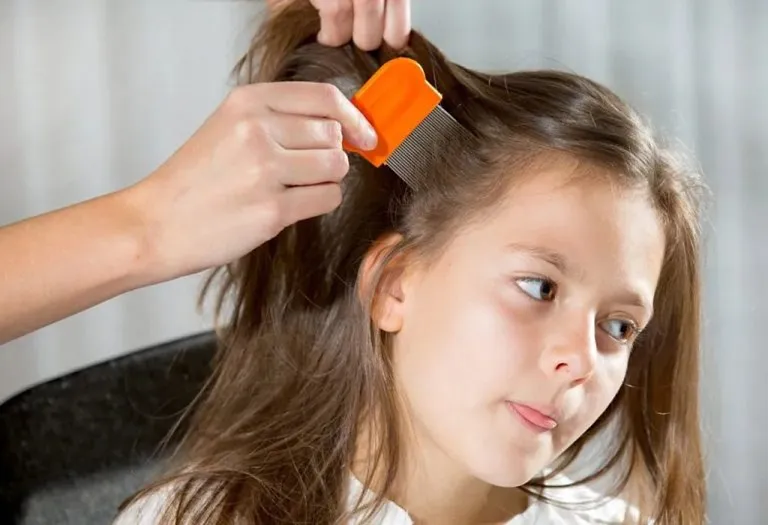White Patches or Spots on Child’s Face – Causes and Home Remedies

White patches on the skin, often referred to as vitiligo, can be a source of concern for parents when they appear on their children. However, it’s essential to understand that while these patches may seem alarming, they are usually harmless. Various treatments are available to help manage its symptoms and improve the appearance of white spots on the child’s face. Parents need to consult a dermatologist for proper diagnosis and treatment options if their child develops white patches on their skin. Additionally, educating oneself and others about vitiligo can help reduce the misconceptions about the white patches that appear on a child’s face, and promote acceptance and understanding of this common skin condition.
What Are the Common Causes of White Patches on a Child’s Face?
White patches on a child’s face can arise from various factors, ranging from nutritional deficiencies to skin conditions. Understanding these causes can help parents address the issue effectively. Here are some common reasons:
1. Vitamin Deficiency
When it comes to white spots on the face of a child, vitamin deficiency can also be a reason. In fact, this is a very common reason for the appearance of the white patches on the faces of many children. We all know that a balanced and healthy diet is essential and that many kids refuse to eat properly. This will result in many deficiencies, and vitamin deficiency is one of them.
The vitamin that is responsible for the production of melanin is vitamin B12. Deficiency in this vitamin can lead to white spots on the face of the kid. They might appear not only on the face but anywhere on the body, especially the forearms. A very high deficiency might lead to itching and further lightening. The skin might also turn red or pink in some cases.
Providing the child with a healthy and balanced diet is the best way to treat these spots after you consult a doctor. Zinc and calcium deficiency could also lead to this problem.
2. Birthmarks
There are many cases where these white spots on a baby’s face turn out to be birthmarks. If such is the case, then there is no need to worry.
3. Tinea Versicolour
Tinea versicolour/ Pityriasis versicolour is a fungal infection caused by Malassezia. The way this fungus affects the children is by producing an acid that will interfere with the melanin production inside the body (1).
When this happens, the patches could either be lighter/ darker than the usual skin colour of the kid. At times, they are itchy and scaly too. They appear mostly on the torso and shoulders but might also be seen on the neck, face, and the stomach.
People who live in a humid or hot climate are affected more. Exposure to the sun can make the patches more pronounced since they are not prone to tanning. All you need to improve this condition is to make sure the kid does not have any immunity problems and consume a well-balanced diet. Lack of hygiene is also known to cause this problem.
4. Vitiligo
Vitiligo is a skin condition that scares many parents though they are harmless. The white patches on the skin are caused due to the loss of pigmentation. Vitiligo is an autoimmune disorder. This means that your body attacks its melanocytes (2). The cells that produce melanin are called melanocytes.
These spots are usually seen on the parts of the body that are exposed to sunlight but may also affect any other part of the body. The condition is more noticeable in children with a darker complexion, though it can affect kids of various skin types. Vitiligo is not contagious, so there is no need to worry. Why this condition scares people is due to the way the patches look. The appearance, along with the lack of knowledge about the disease, causes a stigma.
5. Spots Caused to Injury/Burns
Many times, trauma to a particular part of the skin can cause a lack of pigmentation or delayed pigmentation at the site of the injury.
6. Worm Infection
This reason is a bit questionable. Some people claim the white patches are due to worms in the stomach. Though this reason is not sure, you can still deworm your kids once in a while.
7. Genetic Factors
Genetic predisposition can play a role in the development of white patches on a child’s face. Certain genetic conditions may affect melanin production or distribution, leading to depigmented areas on the skin.
8. Autoimmune Disorders
Apart from vitiligo, other autoimmune disorders may contribute to the formation of white patches on the face. Conditions such as lupus or scleroderma can affect skin pigmentation, resulting in irregular patches of depigmentation.
9. Sun Exposure
Excessive or prolonged exposure to sunlight can sometimes trigger the development of white patches on a child’s face. Sunburns or sun damage may lead to areas of depigmentation, particularly in individuals with fair skin or a family history of skin conditions (3).
10. Allergic Reactions
In some cases, allergic reactions to certain substances or environmental factors can cause skin irritation and depigmentation. Contact dermatitis or other allergic skin conditions may result in white patches on the face, especially if the allergen comes into direct contact with the skin.
How to Get Rid of White Spots on Your Child’s Face at Home?
Here are some home remedies for white patches on the face of a child.
- A broad-spectrum sunscreen can be applied on the face before the child goes outside. Consult a doctor before using any sunscreen lotion.
- Ensure that your kid eats a lot of vegetables and fruits
- Although it is not sure that worms cause patches, there is no harm in deworming the child. You can do this every six months
- Many paediatricians advise using non-perfume and non-dye emollients. This will prevent dry skin which might sometimes lead to Pityriasis Alba
- In case the white patches are due to a fungal infection, then you can use antifungal creams which will work against the infection.
- Consult a doctor before taking any creams, as he is the best person to diagnose any skin issue
How to Treat White Spots That Are Caused Due to Pityriasis Alba?
When the causes are not known it is hard to prevent them. You can make sure your kid eats healthy fruits and vegetables. You could also do this
1. Use Sunscreen
Make sure that your child goes out having applied a broad spectrum of sunscreen. This will help to prevent any sun damage and will protect your child. Consult a doctor before using any sunscreen lotion.
2. Use Non-Scented Emollients or Moisturisers
The patches that appear are sensitive when compared to the skin around it. This is why it is better to use moisturisers that are not filled with artificial fragrance or chemicals. Your paediatrician will know the best moisturiser you could use on your child.
When to Consult a Doctor?
Any of the reasons mentioned above could be a reason for the appearance of white patches. Though most of them are harmless, at times, they could also be dangerous. So the best thing to do is check with a doctor for a proper conclusion.
Apart from that, consult a doctor if you see any of these symptoms accompanied by the patches.
- Severe itching
- An alteration in the colour of the spots (usually to red)
- Loss of sensitivity in that area of the skin
How to Help a Child With White Patches So That It Doesn’t Affect His Self-Confidence?
Little children do not care about the way they look. But when they grow older, their self-awareness increases. This condition might hit their self-confidence. If your kid has been affected by this condition and if he cannot be treated, the parents will have to help him cope.
Here are some points you should keep in mind.
- Start by talking to them and make sure that they are comfortable about the way they look.
- If you feel like you cannot help them, then you can think about counselling.
- Ensure that they are comfortable enough to talk about stuff to you. This way, you can find out if somebody is bullying your child due to his appearance.
- If required, you can inform your kid’s teachers.
- To get rid of any misconceptions, educate their friends.
FAQs
1. Do white spots spread?
White spots on newborn face, such as those caused by vitiligo or fungal infections, may spread gradually over time. However, the rate of spread varies among individuals. Regular monitoring and appropriate treatment can help manage and potentially slow down the spread of white patches.
2. Are there any preventive measures to avoid the occurrence of white patches on a child’s face?
While not all causes of white patches can be prevented, maintaining a balanced diet rich in vitamins and minerals can help prevent nutritional deficiencies that may contribute to depigmentation. Additionally, practicing good skincare habits, protecting the skin from excessive sun exposure, and promptly treating fungal infections or skin injuries can reduce the risk of developing white patches.
3. Is it possible that white patches disappear on their own without treatment?
In some cases, particularly with minor skin discolorations or patches caused by temporary factors like sunburns or allergic reactions, white patches may fade on their own over time. However, conditions such as vitiligo typically require medical intervention for management. It’s essential to consult a healthcare professional for proper diagnosis and treatment recommendations.
White spots on a child’s face are more common than people think. Various reasons cause this, and most of them can be cured. Vitiligo can be successfully treated with Ayurveda medicines if started when diagnosed. So, consult your nearby Ayurveda physician.
References/Resources:
1. Tinea Versicolor; Harvard Health Publishing; https://www.health.harvard.edu/a_to_z/tinea-versicolor-a-to-z
2. Vitiligo; National Institute of Arthritis and Musculoskeletal and Skin Diseases; https://www.niams.nih.gov/health-topics/vitiligo
3. Idiopathic guttate hypomelanosis; DermNet; https://dermnetnz.org/topics/idiopathic-guttate-hypomelanosis
4. Vitiligo; NHS; https://www.nhs.uk/conditions/vitiligo/
5. Pityriasis Alba; C.S. Mott Children’s Hospital; The University of Michigan; https://www.mottchildren.org/health-library/abp4927
6. Karray. M, McKinney. W; Tinea Versicolor; National Library of Medicine; https://www.ncbi.nlm.nih.gov/books/NBK482500/
7. Gianfaldoni. S, Tchernev. G, Wollina. U, Lotti. J, et al.; Vitiligo in Children: A Better Understanding of the Disease (Open Access Macedonian Journal of Medical Sciences); National Library of Medicine; https://www.ncbi.nlm.nih.gov/pmc/articles/PMC5816297/; January 2018
Also Read:
Acne in Children
Effective Tips for Caring for Sick Child
Using Epsom Salt Bath for Infants and Children
Common Teeth Problems in Kids You Should Know
Was This Article Helpful?
Parenting is a huge responsibility, for you as a caregiver, but also for us as a parenting content platform. We understand that and take our responsibility of creating credible content seriously. FirstCry Parenting articles are written and published only after extensive research using factually sound references to deliver quality content that is accurate, validated by experts, and completely reliable. To understand how we go about creating content that is credible, read our editorial policy here.























